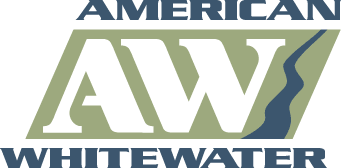 Safety Code of American Whitewater
Safety Code of American Whitewater
1998 revision, related articles
The following article was written to introduce the publication of the safety code in the May-June, 1998, issue of American Whitewater. Due to a technical glitch, this article did not appear; however, the revised safety code did.
Safety Code of American Whitewater Go to Rating Scale Descriptions
go to Class I thru III go to class IV go to class 5
Return to American Whitewater home page Return to American Whitewater safety page
1998 Revisions to The Safety Code of American Whitewater Complete
By Lee Belknap, Chairman, American Whitewater Safety Committee
Changes to the Safety Code of American Whitewater have been completed and are available from the offices of American Whitewater. Changes have been incorporated to further emphasize personal responsibility and the fact that the code is a voluntary standard only. Also incorporated are the changes to the American version of the International Scale of River Difficulty. Included in this change is the list of US Standard Rated Rapids, or benchmarks. Because of the size of the benchmark list, it has been added as a second page to the code.
American Whitewater hopes that with these changes the safety code will remain a useful and important safety resource for whitewater paddlers. In particular, American Whitewater hopes that by modernizing the rating scale and incorporating benchmarks, stabilization of river ratings will occur and factors such as regional differences, varied opinions, or even the year will no longer have major effects on the way rapids and rivers are rated.
Those familiar with the introduction of the benchmarked rapids in the September-October issue of American Whitewater should be aware that some corrections have been made as a result of public comments submitted at the request of the accompanying article in that same issue.
The benchmarked rapids list is a result of a long process that incorporated ratings sent to American Whitewater by 80 individual boaters.. To make a long story short, the responses were basically averaged, sorted, and culled with the help of proofreading by dozens of paddlers from across the United States. The list presented in the September-October journal was actually a kick-off for the final stage of the proofreading phase, with the paddling public being the proofreaders. The comments we received were very helpful.
Almost all of the responses were very positive with suggested changes or corrections to errors that could not have been detected without their assistance. There were a number of suggestions to change the ratings of individual rapids, and in a few cases responses suggested that the individual would prefer that certain ranges of the scale be upgraded or downgraded. It would seem to be a measure of the success of this project that the upgraders cancelled out the downgraders, further reinforcing the view of American Whitewater that we have obtained a scale that is as close to middle ground as is possible.
American Whitewater hopes that paddlers will find the benchmarks useful and will strive to maintain the code and the rating scale in the future to best meet the needs of whitewater paddlers in America.
Sidebar:
Rating Danger
One of the more noticeable changes that has occurred over the years to the rating scale has been a reduction in emphasis of danger when rating a rapids or river. This has a lot to do with how we describe rapids to each other. We usually try to discuss many different aspects including length, volume, gradient, climate, remoteness, scenery, hazards, and difficulty. With exception of difficulty, each of these can be described in great detail. Difficulty however can only be described by comparison. You have experienced large irregular waves per the definition of the class, or you’ve experienced several rapids that are benchmarked as Class IV-. Without the difficulty scale you’d have to hope that you and your informant have a couple of rapids in common somewhere that you can compare to–not true for danger or any other aspect of whitewater normally described.
There have been several proposals to add a danger rating to the rating scale. Proposals including letter designations, x’s on rapids where accidents have been documented, and a parallel Class 1-5 scale just for danger. The last may be the most popular, but it is still not frequently used.
American Whitewater announced along with the updated rating scale that if there was enough public demand for such a system that we would pursue it. While we did receive several comments asking for this, for the most part the boating community seems to be content with leaving this off and simply describing the hazard in detail, something that needs to be done anyway. By nature, a hazard scale would be both redundant, and a quick attention getter: redundant because off the need to describe, and an attention getter because paddlers would see the rating and know to ask more questions. If demand for a hazard scale increases, and we learn that paddlers would use it, then American Whitewater will pursue it.
Return to American Whitewater safety page
Return to American Whitewater safety code

